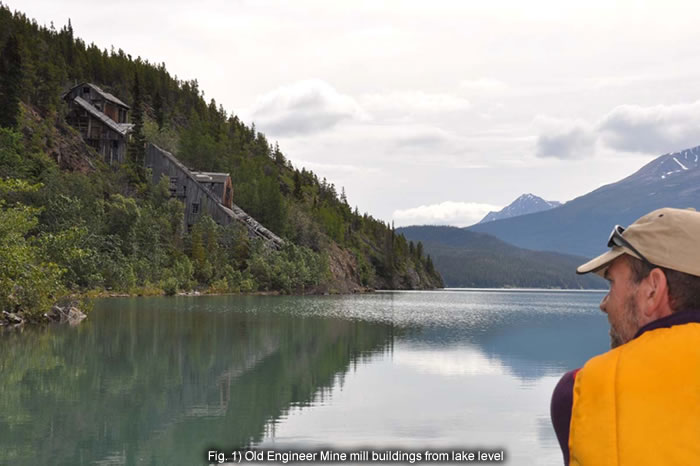
The Engineer Mine has been an intriguing source of gold for over a century. Born as an offshoot of the Klondike gold rush, the Engineer Mine was originally developed as a remote underground gold mining operation, and then, eventually, complete with a fully serviced town. Since those early, heady days, a number of companies have examined the property, all hoping to find the geological key unlocking the larger gold resource that may lie within or near the current workings. Currently, the six crown grants claim and six surrounding claims are controlled 100% by BCGold Corp (BCGold). BCGold has been involved with the property since 2007.
BCGold is a Vancouver based, TSX-listed company with a fully diluted market capitalization of $5M (2012), focused on exploration and development of copper and gold deposits in “first-world” political environments, particularly British Columbia and the Yukon. It has a number of projects in various stages of development. BCGold’s main focus, at the present time, is advancement of the Engineer Mine property.
BCGold has been conducting both regional exploration and Engineer Mine-focussed exploration and resource development, in the area for the last five years. In 2012, surface exploration consisted of mapping plus soil sampling to follow up on geophysical anomalies to correlate geochemical anomalies. Underground sampling to-date has confirmed the potential for development of a resource that could sustain a modest mining-milling operation. There is a mill on-site capable of processing 30tpd of ore per day to produce a gravity concentrate on a seasonal, campaign basis. The mill consists of a crusher, ball mill, screen deck and Dieter shaker tables. That mill could be de-bottlenecked fairly easily to accommodate a larger throughput. As well, BCGold has been conducting regional exploration around the Engineer Mine in the belief that a lower grade but higher tonnage resource may exist that could potentially support a large tonnage mining/milling operation.
I met senior management of BCGold Corp at the Prospectors and Developers Association of Canada Annual Convention (PDAC) in Toronto and they were keen to explore the mineral specimen producing potential of the property. Our discussions led to an agreement where I would spend a week or so at the mine during the 2012 summer exploration season and work alongside mining and geological crews in an effort to recover specimens from active and historically producing zones and dumps of the mine. Specimens that have been recovered will be offered to shareholders, collectors, museums, etc., and serve as a legacy of a unique and geologically interesting gold mine. To view Engineer Mine mineral specimens for sale on this website, please click here.
BCGold’s goal for the 2012 summer exploration season was to dewater Levels 6 and 7, rehabilitate the winze needed to access them from Level 5 down, rehabilitate the two levels and then conduct a complete sampling program on the veins exposed on those levels. Mining crews from Ampex Mining Ltd. were retained to carry out the work. I travelled to the site in August of 2012 with Darren O’Brien, BCGold’s Vice President of Exploration.
The Engineer Mine is located on the eastern shore of Taku Arm, part of Tagish Lake, in northern British Columbia (BC) near BC’s borders with the Yukon Territory (Yukon) and Alaska. It is in the Atlin Mining District of British Columbia about 32km west of Atlin. Transport in and out of the mine site is usually through Atlin, BC and Carcross, Yukon, by air, barge or ice road.
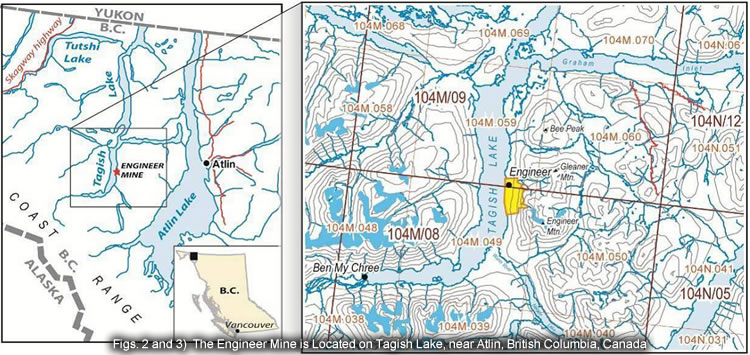
The following section on Geology has been largely extracted from BCGold documents, verbatim.
Quartz veining and gold mineralization occurs in two modes at the Engineer Mine property, in brittle deformation and hydrothermal breccia zones along Shear Zone “A” and along structures outside of the Shear Zone “A” deformation zone.

Shear Zone "A"
Shear Zone “A” is a northwest-trending 200 metre-wide shear zone with a protracted deformation history, related as a splay to the major terrane-bounding Llewellyn fault. Earliest semi-ductile deformation along Shear Zone “A” may be as old as Late Triassic. Shear Zone “A” was reactivated along its northern boundary in the Eocene. The reactivation coincides with the emplacement of a volcanic complex immediately to the southeast at Engineer Mountain; part of the Sloko Group. Hydrothermal fluids related to the Sloko Group volcanic complex were focused along Shear Zone “A” and other pre-existing fractures on the property, resulting in gold-bearing hydrothermal veins and breccias.
Brittle Deformation and Hydrothermal Breccia Zones
The first mode of gold mineralization at the Engineer Mine property, occurring in brittle deformation and hydrothermal breccias zones along the Shear Zone “A” deformation zone, represents a bulk tonnage gold target. This gold occurs in quartz-calcite-pyrite cemented hydrothermal breccias and quartz vein zones up to 50 metres wide and along a strike length of more than 400 metres. The breccia zone remains open along strike and to depth and require further drill testing.
Several breccia types are recognized in core, including pyrite cemented polymict breccias, fine pale quartz-cemented breccias, dark siliceous breccias with varying clast content, and intrusive clast breccias. Overprinting, multi-stage quartz-pyrite veining relationships are also recorded in core. Gold values are highest in zones of fine quartz flooding, and high silver values are attributed to quartz-arsenopyrite-stibnite veins. BCGold Corp is conducting geochemical and other prospecting techniques in an effort to identify potential bulk tonnage gold targets. Many other gold exploration and mining companies (Goldcorp Inc., Detour Lake Gold, Osisko Mining Corp., etc.) have been successful with this strategy. ie exploring for bulk tonnage gold deposits around former producing, smaller, high grade deposits.
The mode of mineralization of most interest for mineral specimens at the Engineer Mine property is in high-grade gold and silver veins that occur outside of the Shear Zone “A” deformation zone. These quartz-calcite veins formed in pre-existing structures that were re-opened during the Eocene hydrothermal event and reactivation of Shear Zone “A”. To the south of Shear Zone “A”, the veins are both extensional and shear in character. They show a structural relationship to Shear Zone “A” movement. Historic production in the area was from the Engineer and Double Decker veins (view Summary Map) that extend south from the reactivated section of Shear Zone “A”. These veins are less than 2 metres wide, strike northeast, and pinch and swell along strike but have good vertical continuity.
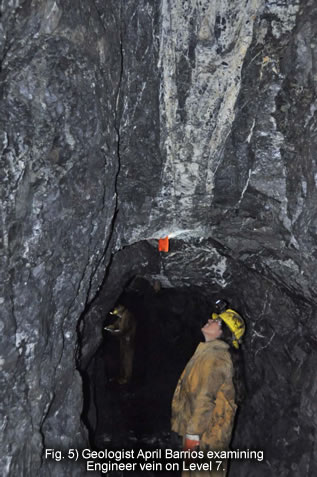
High Grade Veins
Other important gold veins that occur outside of the Shear Zone “A” deformation zone are the high-grade Shaft vein and the Boulder-Governor vein system; all are to the north of Shear Zone “A”. The Shaft vein is vertical on surface but changes to moderately southwest-dipping at depth. It produces coarse free gold. A high-grade zone on the Shaft vein, 113 metres below surface on the 5 Level underground, has bands of arsenopyrite (and stibnite?) up to 1 centimetre wide. The mineralogy is similar to the very high grade Engineer vein to the south. The nearby Boulder-Governor vein system produces free gold in quartz and carbonate concentrated in hydrothermal breccia zones up to 5 metres wide and 50 metres long at vein intersections. The veins strike northwest and southeast. Bonanza gold grades were mined in the 1990’s at these vein intersections.

Host Rocks
The host rock to all the veins and breccia zones on the Engineer Mine property is argillite and greywacke of the Laberge Group. Monzodiorite dykes related to the Sloko Group complex occur across the property, displaying varying degrees of quartz-carbonate-clay alteration. Some of the most altered dykes may be rhyolite dykes from the same intrusive event.
The history of the Engineer Mine property dates back to 1899 when a couple of Swedish prospectors located a yellow metal on the shores of Tagish Lake. C.A. Anderson, an engineer from the Yukon & White Pass Railway followed up on the Swedes’ information and discovered visible gold in quartz/calcite veins on the shore of Tagish Lake, below Engineer Mountain. He returned with associates, in July, 1899, and staked the Engineer group of claims (Mauthner et al, 1996). After a small amount of development work, the Engineer Mining Company allowed the claims to lapse in 1906.
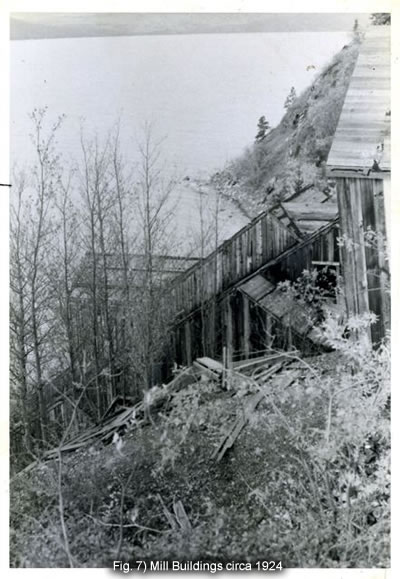
The early history of the Engineer Mine is closely associated with Captain James Alexander who, by all accounts, was an interesting character. James Alexander immigrated to Canada, from England, in 1899, drawn by the romantic wilderness life of British Columbia. For a year or so he sailed the coast of British Columbia doing various work and was, apparently, particularly interested in minerals. Alexander took a break from pioneer life in 1900 and travelled to England and then South Africa to fight for England in the Boer War. He attained the rank of Captain in the Third Dragoon Guards and, after the war, returned to British Columbia (Brook). He was on the survey crew that surveyed the original Engineer Claim Group, in 1905 (Brook) and, thus, was very familiar with the location.
Alexander gained control of the Engineer Group, with partners in 1906. There were contentious issues for a while during this period with litigation, subterfuge, curses and surreptitious claim staking (Brook) (Mauthner, 1996) but work continued on the property so that by 1910, Captain Alexander had a two stamp mill working at the Level 1 of the property (Hougen).
By 1912, Alexander had sole ownership of the Engineer Mine and systematically explored and mined the property. He developed the upper levels of the underground workings and processed over 2,000 ounces of gold over several seasons (BCGold, 2012). In 1918, Captain Alexander had arranged for a possible sale of the Engineer Mine to Mining Corporation, a prominent Canadian Mining Company of the time, and traveled back to the mine with representatives of Mining Corporation. During that trek, Captain Alexander, along with 353 other passengers, including his “wife” and two of the Mining Corporation men, died aboard the Steamship Princess Sophia when it sank near Juneau on October 25, 1918. After Captain Alexander’s death, several claimants (including another wife in England) appeared with interests in the property, and many years of litigation followed.
The property was finally taken over in 1923 by a New York group and production from Engineer Gold Mines Ltd. began in 1924. Advances at this time were the most significant that the property had seen yet. They included the development of a town site, installation of a power plant on the Wann River with transmission lines to the mine, construction of a concentrator and mill on the lakeshore near the 5 Level portal, and development of the underground tunnels down to 8 Level. Over 140 people were employed at the site.
Visible gold detection was the primary method used to identify and follow ore shoots in veins. Reserves were exhausted by 1927, but development continued with drifting and limited mining until 1933. Reginald Brook, an associate of Captain Alexander, stayed on as caretaker of the property and selectively hand-mined the Shaft Vein. In 1944 a group of miners leased the property and high-graded the veins on the underground workings until 1952 (Mauthner, 1996).
Documented ore production between 1910 and 1952 at Engineer Mine is recorded as approximately 14,263 tonnes at 39.4 g/t Au and 19.5 g/t Ag (18,000 oz Au and 8,950 oz Ag). Underground workings consist of about 5,500 metres of drifts, shafts, raises and stopes on eight levels.
Several exploration companies worked on the property from the 1960s to 1980s, to varying degrees, including Tagish Gold Mines; Nu-Energy Resources Ltd., which sampled the hydrothermal breccia zone along Shear Zone "A" on 5 Level; and Nu-Lady Gold Mines Ltd. In 1987, Total Erickson Resources Ltd. conducted the most comprehensive modern exploration of the property yet completed, including an aeromagnetic survey, detailed geology, and drilling.
Gentry Resources Ltd. optioned the property from Total Erickson in 1989, and acquired title to the property in 1990 with Winslow Gold Corp. Ampex Mining acquired an interest in the property from Winslow in 1993, and through further transactions the property interest was passed to Old Engineer Mining Corp. (now Engineer Mining Corp.) in 1997. Mining and development activities occurred throughout this time and are detailed in Davidson (1998).
In 2007, BCGold Corp. optioned the Engineer Mine property from Engineer Mining Corp.
The goal during my week at the mine was to explore the three working Levels, 5, 6 and 7, for quality mineral specimens. Levels 6 and 7 have been flooded since 1928 and Ampex mining crews worked hard, prior to our visit, to dewater the winze and rehabilitate those levels. As well, I examined other adits, surface excavations and surface waste rock piles in an effort to salvage mineral specimens. I was particularly keen to locate excellent specimens of electrum (a natural alloy of gold and silver) and "allemontite", not a valid mineral but a combination of interlayered and/or intermixed arsenic and stibarsen for which the mine is famous.
My tool of choice for locating allemontite specimens was my metal detector, a White Classic III with a Blue Max 950 coil. Allemontite responds well to this machine with a strong, sharp signal and it was relatively easy to locate pieces in the waste dumps and veins, when they were present. Unfortunately, the waste rock dumps are also laced with scrap metal, particularly nails, wire and spent blasting caps. These proved to be a tiresome nuisance in specimen recovery. They also provided a strong, sharp signal to the metal detector!
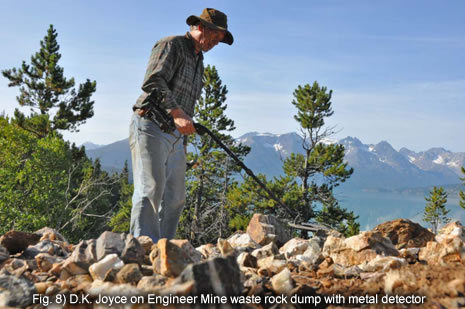
I knew that the rich but disseminated, fine-dendritic electrum at the Engineer Mine does not respond to metal detection well and gives, at best, a very weak signal, at very shallow depth of burial. So the only way that I could find gold on the property was with my eyes and rock hammer. How primitive! Some of the Geological staff on site were particularly adept at spotting the electrum in the tell-tale roscoelite fragments. We did find some very good high-grade!
A nice surprise were the numerous vugs and cavities that we encountered in the underground workings. All of the veins are fairly vuggy, at times, particularly vuggy in proximity to the monzodiorite dykes and these openings are always lined with crystals of quartz and calcite. As well, the multi-episodic mineralizing events that created the veins, caused various generations of these mineral to form, including sharp casts of quartz after calcite and then quartz fillings of the casts!, resulting in abundant epimorphs and pseudomorphs of the two minerals, some excellent. I was happy to recover any of these types of specimens.
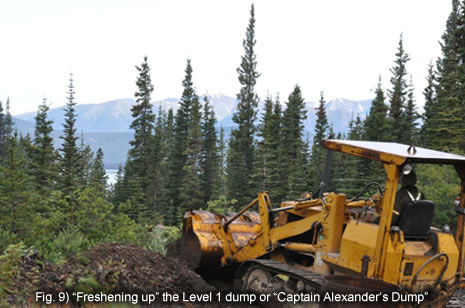
Level 1 - Dump
I spent considerable time at the Level 1 waste rock dump. This dump is also referred to as “Captain Alexander’s Dump”, since it is adjacent to the stamp mill that Captain Alexander built back at the beginning of the 1900’s. The dump is waste from mining plus the hand-cobbing/sorting of the earliest operations of the Engineer Mine and was the only good source of allemontite that I found at the site. Since my metal detector would only detect allemontite to a depth of 20-30cm or so, Swede Martensson, mining contractor on site, kindly bulldozed the dump twice in order to provide me with fresh material to examine. I was hoping to recover some larger lumps of allemontite but the biggest pieces were only 50mm or so across, with most smaller.
Shaft Vein Dump
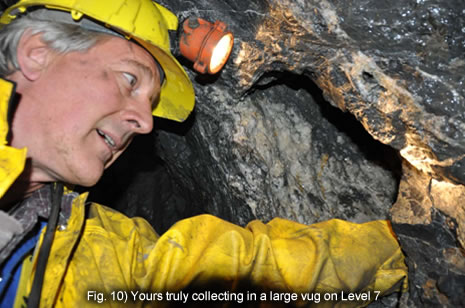
We examined all of the surface workings and dumps by eye and with the metal detector. Only the Shaft Vein revealed some very good electrum. No allemontite was found there. Dr. Leo Millonig, a graduate researcher working at the property, found some very high-grade pieces of electrum in quartz/calcite and I found several more.
Engineer Vein - Level 5
Level 5 is accessed by an adit which cross-cuts the Double Decker and Engineer Veins and is the portal to the current operation. The collar of a winze (internal shaft) is located at Level 5 on the Engineer vein and the levels 6 and 7 were accessed using ladders and a winch in that shaft. The shaft had been flooded since 1928 and so, to access the Levels 6 and 7, Ampex mining dewatered and rehabilitated the shaft and timber to a useable and safe condition down to the floor of Level 7. Level 8 was not accessed during this phase of the project. The timber was in pristine condition and required only some new nails and support here and there to be useful and safe. Level 5 was a working-mining level in the old days and extensive stoping was done on both the Engineer Vein and the Double Decker Vein from this level. Although some electrum could be seen in-situ, very little was seen elsewhere on the level since the old stopes, where you would likely find it, were too dangerous to access. A large vug was located in the Engineer Vein about 40m from the shaft and a few nice calcite specimens were recovered from it.
Engineer Vein - Level 6

There was not much to collect mineral specimen-wise on Level 6, although one of the miners found a very good piece of roscoelite/electrum there during my visit. The level holds promise to increase the mineral resource on the property.
Engineer Vein - Level 7
We found two quartz-calcite vugs, one large, one small, on Level 7. The larger vug was lined with drusy quartz crystals that had two different generations of calcite on the quartz, as well as small clusters of 1-4mm pyrite crystals. The smaller vug had just a few sharp, white, hexagonal-tabular calcite crystals in it.
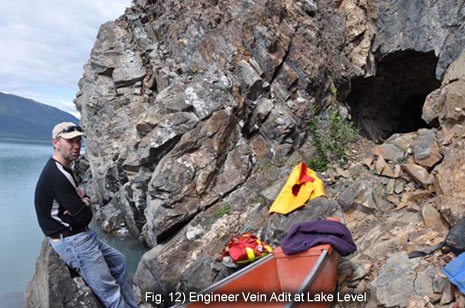
Engineer Vein - Lake Adit
There is an adit that goes 40m or so, along strike, into the Engineer vein on the shore of Tagish Lake, near water level, accessible by canoe. Dr. Millonig noticed a large calcite-quartz vug near the entrance to the portal and collected a rather excellent quartz-covered calcite specimen, with crystals to 12.0cm or so, from it. That specimen is now in the offices of BCGold Corp, in Vancouver. I also collected some specimens from this vug.
Double Decker Vein Lake Adit
Nothing of interest was found at the adit located on the Double Decker Vein at lake level.
Allemontite The literature on the Engineer Mine often refers to a mineral called “allemontite”. Allemontite is not a valid mineral but is really interlayered and/or mixed arsenic and stibarsen, two valid minerals. All of the “allemontite” was recovered from one source, the 100 level waste rock dump adjacent to Captain Alexander’s original mill. None was seen in-situ underground, although some was detected within the veins. See these two minerals for more detail.
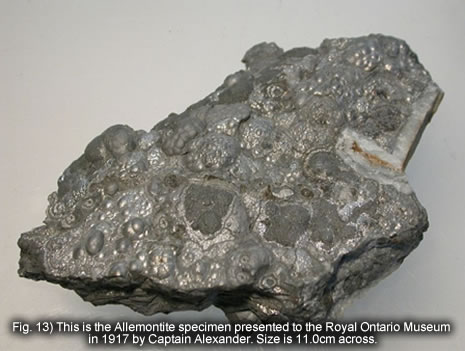
In 1917, Captain Alexander donated an unusually excellent example of allemontite and some electrum samples to the Royal Ontario Museum, Toronto, Ontario. Professor T.L. Walker, the first director of the Royal Ontario Museum and professor at University of Toronto, was intrigued by the specimen and undertook a scientific examination of it. He determined that allemontite was not a mineral after all but what he felt was a mixture of two minerals; antimony and arsenic in an interlayered aggregate and wrote a paper about it later in 1921. He was partially correct. It turns out that subsequent work on Allemontite has revealed that it is, indeed an interlayered aggregate of two minerals but the minerals are arsenic and stibarsen (Mauthner, 1996). Stibarsen is a valid mineral, a composition of Antimony and Arsenic –a natural semi-metal alloy, if you will.
Professor Walker made the trip across Canada to visit the Engineer Mine in 1921 to observe the mineralogy of the Engineer Mine, in situ. The mine manager, Reginald Brook collected five condensed milk boxes of allemontite specimens for Professor Walker, who took them back to Ontario (Brook). Nobody knows what happened to the specimens, since none of them were ever catalogued! I wish I that I knew!
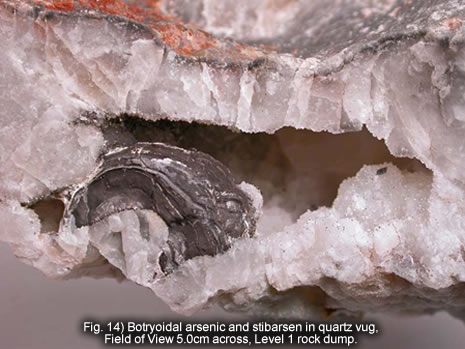
Antimony Apparently, native antimony has been found at the Engineer Mine but I did not encounter any. However, I have included a couple of photo s of native antimony as found at the Engineer Mine that are in the collection of L. Twaites. The compositions of the minerals on the specimen have been confirmed by electron microprobe analyses.
Arsenic I found numerous fragments of arsenic, up to 30mm across, in Captain Alexander’s waste rock dump, often with stibarsen. The arsenic is always botryoidal and even if it appears not to be, close examination will reveal concentric banding in most samples. The arsenic can also be recognized by the reddish-purple product of oxidation that usually coats it in weathered pieces. In most cases, when arsenic was found in matrix, it had formed in quartz-lined vugs in the veins, with the remainder of the vug filled with coarse calcite.
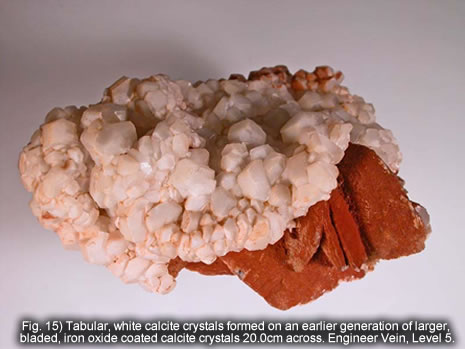
Calcite This mineral composes a large proportion of the veins and is often intergrown with the quartz and other minerals. Along with the allemontite, it does seem to be one of the last minerals to have formed in the youngest mineralizing episodes. Excellent crystals with varying morphologies were noted with the largest being rhombohedra to 12.0cm.
Electrum This is the main economic mineral in the veins and the raison d’être of the Engineer mine. Gold is always alloyed with silver and, at the Engineer Mine, in an average ratio of around Au:Ag, 40:60. The “gold” at the Engineer Mine is, in fact, always electrum. The nicest specimens are the beautifully crystallized, dendritic masses in calcite. In those specimens, the calcite can be slightly dissolved away with acids to reveal the crystals of electrum, often associated with crystals of quartz. The electrum usually occurs as beautiful “herringbone” crystal aggregates, branching dendritic forms and wires in roscoelite. Geologists and miners at the mine are always attuned to the “look” that the electrum-roscoelite aggregates have, since it is believed this combination represents the largest volume of the economically important amounts of gold in the veins. Roscoelite always has electrum in it!
Rich leaf gold was found in quartz and calcite, not roscoelite, at the Shaft Vein, during my visit. This has also been found at the nearby Boulder vein.
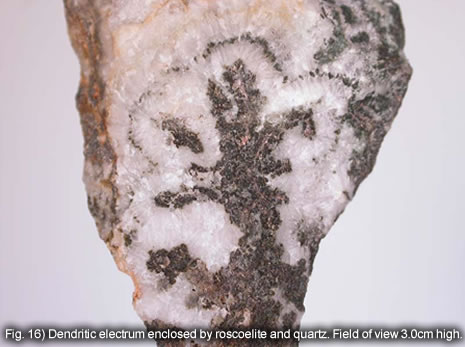
Quartz This is one of the most common minerals in the quartz-calcite veins. The quartz has various textures due to the multi-episodic nature of the veins. Size of crystals ranges from fine drusy crystals to coarser 10mm crystals lining vugs and casts. Often, the druzy quartz is overgrown on calcite or is a present as a shell after calcite crystals. It is almost always milky or colourless. As well, as previously mentioned, quartz is also present as casts after sharp feldspar (type?) crystals.
Roscoelite This vanadiaum-rich mica-group mineral is an indicator of higher grades at the mine. It most commonly encases the electrum and is, thus, an indicator mineral. Other than hosting much of the electrum at the deposit, it has little interest as a specimen. It has a characteristic dark green, almost black colour that all people at the mine become attuned to.

Stibarsen This relatively rare mineral was present to a greater or lesser extent in the majority of the allemontite that was recovered. It is present as silvery layers within in botryoidal aggregates with black arsenic with the stibarsen often being the last phase in the botryoid. Since many of the specimens had lain in the waste rock dump for 90 years, or so, so many of the recovered specimens showed stibarsen as a white, oxidized layer when first recovered.
Preparation techniques exposed some fresh surfaces on or from within in these specimens. I was hoping to recover more of this relatively rare mineral but we’ll have to wait and hope for a future mining operation to recover fresh, excellent specimens.
To view mineral Engineer Mine specimens for sale, please click here.
The work camp at the Engineer Mine project is not an atypical camp, in my experience but it was unique in a number of ways. I thought I’d include sort of outline of a “typical day” for readers who are not familiar with this type of operation.
The camp consists of the “main building” which is a series of attached modular buildings similar to those at many construction or mine camps. The main building contained the all-important kitchen, storage, dining room, “Dry”(where all of the work clothes and underground gear is kept), shower/laundry and toilets and bedrooms. The bedrooms are built to house four people per room but since there were only six or so of us that needed rooms we each had one to ourselves! There are also a couple of trailers that have been located on the site that some of us stayed in plus a very nice chalet that had been built sometime in the past that can house a couple of people. I didn’t hear anyone complaining about lodging!
One thing that I noticed was that everybody at site was REALLY into their jobs. They lived and breathed mining and geology. The hours were long but even when they weren’t “working”, they were most often thinking about the work, discussing better ways, learning about each others’ jobs, planning ahead, reviewing what has happened, etc.
The camp is a dry camp., ie no (or very little) alcohol. There is no TV at the camp, although there could be. Everyone was pretty pleased to not have television. Instead, we ended up in many excellent conversations, picking guitars, planning work, reviewing progress and events and listening to each others’ stories. Swede always seemed to be in the middle of the story telling! There is very good wireless reception via satellite at the mine and we all could use our Blackberries, I-phones and computers to surf and communicate with the office, home and friends. Bruce Coates, the Project/camp manager ensured that the various duties were accomplished and that everyone worked in a safe manner. The people at the Engineer Mine seemed to get along well and I enjoyed their company very much.

Breakfast happened every morning at 7:00pm sharp. Each day Belinda had an excellent breakfast for us and was quick to accommodate individual food desires and needs. There was always hot coffee ready and a basket of fresh baked cookies beside it. After and during breakfast, at the table, the plan for the day was reviewed and any questions answered or coordination handled. After breakfast, everyone changed into their work clothes and headed off to do their respective tasks –preparing samples, cutting or logging core, mapping, writing reports, tending the pumps, tending the generators, etc. I had all of my underground gear with me and so was self-contained for any type of work. The main emphasis when I was on site was the sampling of the veins underground on Levels 6 and 7 and most of everyone’s activity had to do with that effort. I generally went underground with everyone else and examined the veins and collected minerals on the levels that they were working on or collected at the various sites on surface.
There were four “Quads” or ATVs on-site and that made getting around the site a lot quicker and easier. The boat generally comes in once per week to bring people and supplies and to take out shipments of samples and the people that were at the end of their stint.
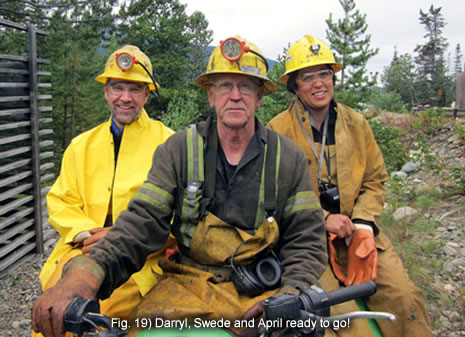
Lunch was precisely at Noon hour and everyone came back up from underground or wherever they were working to partake in healthy and satisfying lunch. Great soup! More cookies! After lunch and a suitable break, everyone returned to what they were doing during the morning.
Supper was at 6:00pm and, besides always being a great meal, was a time for excellent conversation, discussion, raising of issues and more planning. Someone always seemed to have some interesting rocks, minerals or gold to pass around for the others to examine. After supper everyone usually sat out on the front deck or in the dining area to read or chat. There were always pumps to check on and other such duties, as well. That continued more or less, off and on, until everyone was sleeping, usually by 11:00pm or so. Then next morning, it started all over again!
The sampling project at the Engineer Mine was an operational success for BCGold and its contractor Ampex Mining. The old 600 and 700 levels were dewatered, rehabilitated and sampled (160 large chip samples!) and are now flooded again. Let’s hope that BCGold returns to these and other levels in the future for further exploration work and perhaps to start a mining operation!
My aspect of the project was also a success. I managed to recover very good examples of electrum, “allemontite”, calcite and various pseudomorphs-epimorphs. My only disappointment was the quantity of allemontite that we recovered. I had hoped to do better. Many of the specimens that I collected or that were supplied by BCGold Corp are for sale on this website. I hope that I will have an opportunity to return to this intriguing old mine sometime in the future.
If active mining is undertaken in the future, I am confident that excellent mineral specimens of electrum, stibarsen, arsenic, calcite, various pseudomorphs and possibly other minerals will be recovered.
It was a pleasure to work with the various people at the site. I sincerely thank all for enabling me to integrate my efforts with their work and for making me feel welcome and part of the team.
The Ampex staff, Swede Martinssen, Paul Wray, Dave Parisien, Belinda Gladish and Mike LeBlanc were not only hard working professionals, they also ranked high in the all-important camp attribute of camaraderie. Swede was one of the most effective leaders that I have seen in a long time, working well with all staff on-site in a safe and knowledgeable manner, always with a sense of humour. Swede has been involved with the Engineer Mine for many years and his understanding of the history and workings helped us all in our work. Mike and Paul (who also runs the Yukon Rock Shop near Whitehorse) were very effective in helping us all accomplish our geological and mineralogical duties safely and efficiently. Belinda the camp cook AND qualified first aid person always had a smile to offer, plus fed us well balanced, delicious meals that we always looked forward to!
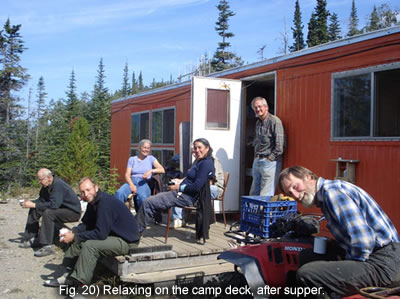
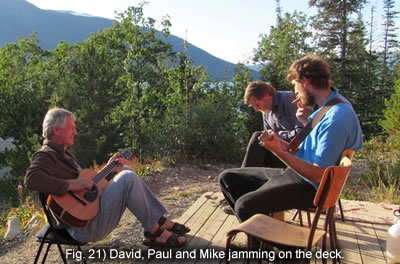
The BCGold geological staff, Darren O’Brien, Bruce Coates, April Barrios, Fionnuala Devine and Dr. Leo Millonig (also of University of British Columbia (UBC)) were a dedicated, hard-working lot, also well versed in camraderie. Led by VP Exploration Darren O’Brien and project manager Bruce Coates, they managed to accomplish the gruelling work of mapping and accurately chip-sampling the 6th and 7th levels on schedule. Special thanks to Dr. Millonig who worked at the site and is also doing post graduate geological-mineralogical research on the Engineer Mine veins at UBC for the next year or so. He has a keen eye for detail AND gold, amongst other minerals!
I have thoroughly enjoyed being involved with the Engineer Mine project. BCGold management are to be commended for their willingness to recover unusual mineral specimens to be offered to the world as a legacy of the historic Engineer Mine, its interesting veins and BCGold Corp.
BCGold (2012). www.bcgoldcorp.com. Lots of information on the history and current status of the Engineer Mine here.
Brook, R. Engineer Gold Mine Story. Yukon Archives. A fascinating account of life before and during the Engineer Mine by Reginald Brook who was a close friend of Captain Alexander and mine manager at the Engineer Mine for many years.
Dominy, S. C. and Platten, I.M., 2012. Application of historical data to estimate a mineral resource at the Engineer gold mine, BC, Canada, in Proceedings of the Narrow Vein Mining Conference 2012 (Editor: S. C. Dominy), 81-100 (The Australasian Institute of Mining and Metallurgy: Melbourne).
Hougen www.hougengroup.com/yukonHistory. Hougen Group of Companies, of the Yukon, has a wonderful website full of information on all things Yukon. In particular, please look at this link: http://www.hougengroup.com/yukonHistory/nuggets_year/2000s.aspx?nugget=1965#ENGINEER for their take on the history of the Engineer Mine.
Mauthner, M.H.F, Groat, L.A. and Raudsepp, M. (1996). The Engineer Mine. The Mineralogical Record, Volume 27, p263-273 An excellent paper on this Mine, including much more in-depth look at the mineralogy.
Walker, T.L. “Allemontite” from Atlin, BC (1921) Journal of the Mineralogical Society of America, Vol. 6, No. 6. Walker was the first Director of the Royal Ontario Museum and visited the Engineer Mine in 1921.
Specimens
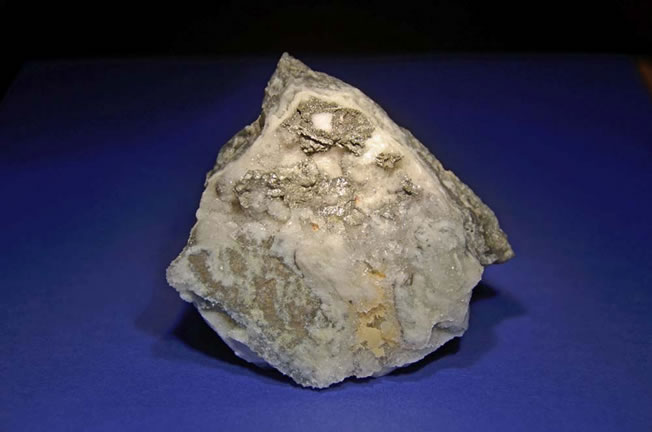
Figure 22) Native Antimony, Arsenic crystals, 7.0 x 7.0 cm. I didn’t personally see any native antimony during my visit. This specimen has tin-white native antimony and the smaller, darker crystals are crystals of arsenic. The minerals were confirmed by microprobe analysis. L. Twaites photo and collection
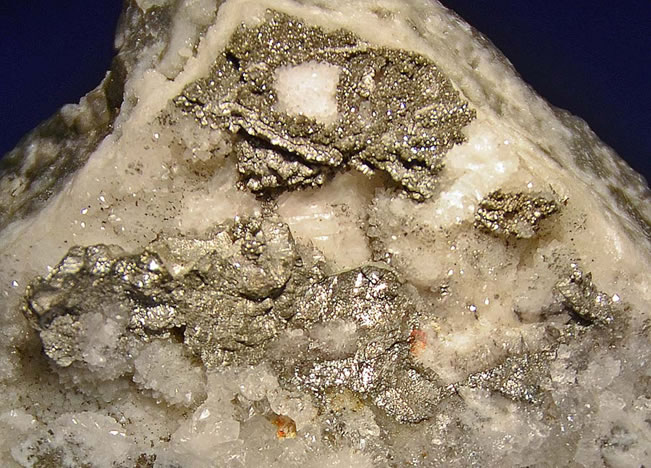
Figure 23) Close up of native Antimony from figure in the lower part of the specimen and arsenic crystals in the upper part of the piece. Field of view about 5.0cm across.
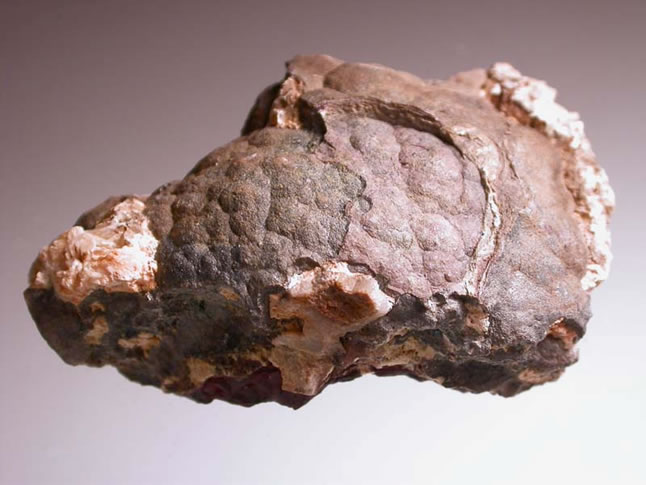
Figure 24) Botryoidal Arsenic from Captain Alexander’s Dump, 5.5cm across.

Figure 25) Botryoidal Arsenic in quartz, Captain Alexander’s Dump, 6.7cm across
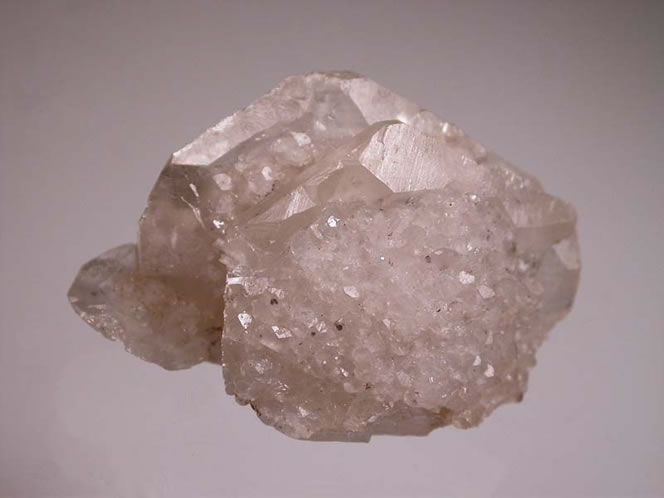
Figure 26) Calcite crystals, Engineer Vein, Level 7, 5.0cm across
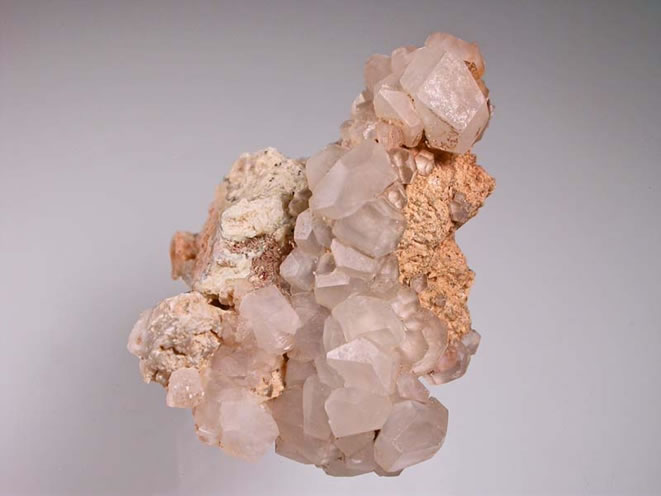
Figure 27) Calcite crystals, Engineer Vein, Level 5, 7.0cm high

Figure 28) Calcite – small crystals overgrown on larger crystals, Engineer vein, Level 7, 6.8cm across

Figure 29) Calcite –later generation of tabular crystals overgrowing earlier, iron oxide coated, bladed crystals, Engineer Vein, Level 7, field of view 15.0cm high
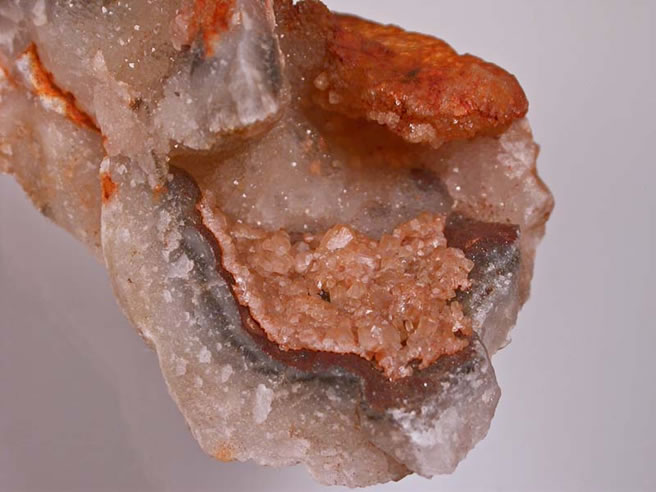
Figure 30) Calcite crystals in a quartz vug, Engineer Vein, Level 7, field of view 7.0cm across
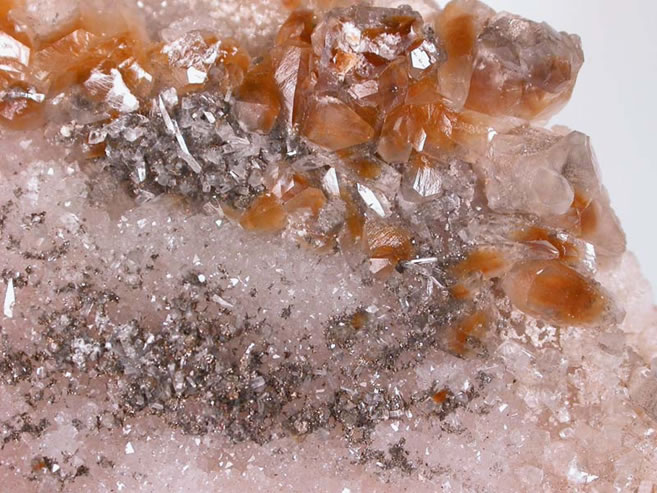
Figure 31) Calcite, three different generations (elongated clear prismatic, iron-tinted scalenohedra and white-grey rhombs) of crystals on quartz crystals with minute pyrite crystals. Field of View 5.0cm across
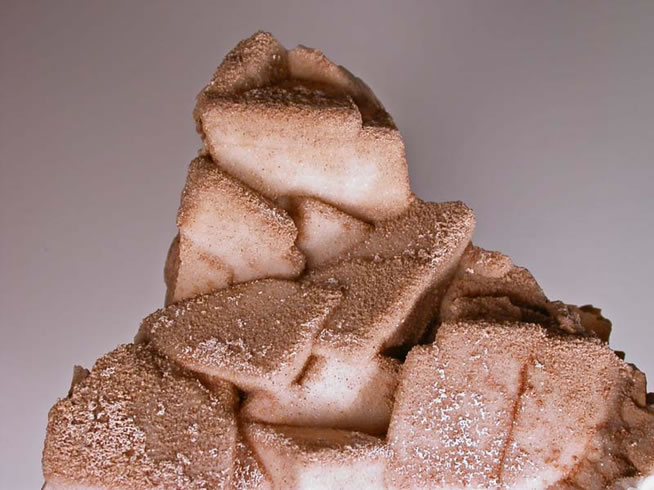
Figure 32) Quartz-encrusted calcite rhombohedra, Engineer Vein, lake level adit, field of view 11.0cm across
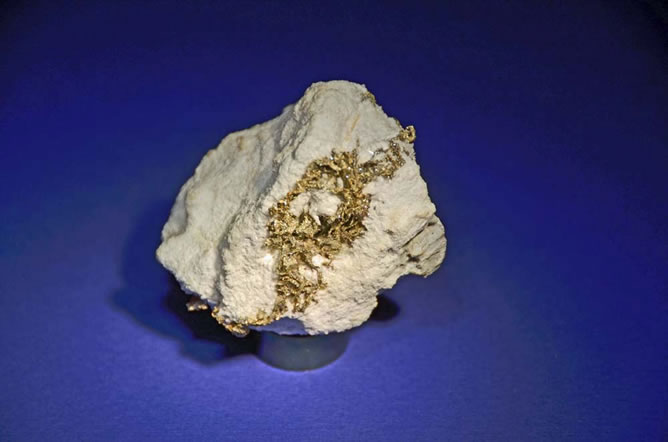
Figure 33) Electrum in quartz, specimen, Governor Vein, 5.0cm across. L. Twaites collection and photo.

Figure 34) Dendritic electrum encased in roscoelite and embedded in quartz, field of view 3.0cm across

Figure 35) Electrum in roscoelite in quartz-calcite vein material, specimen 7.0cm across
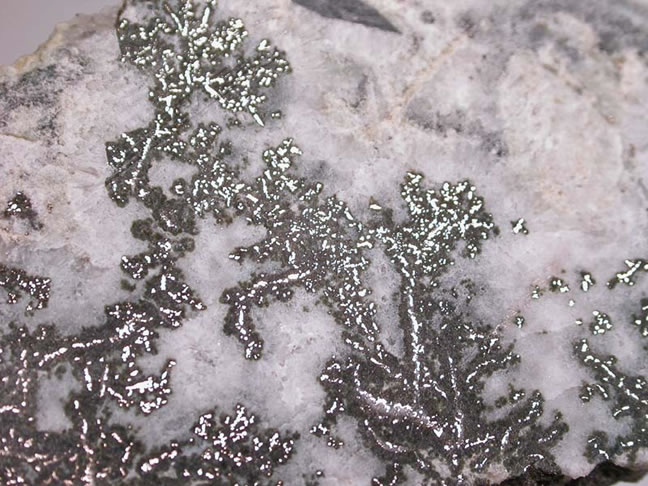
Figure 36) Close-up of Figure 35
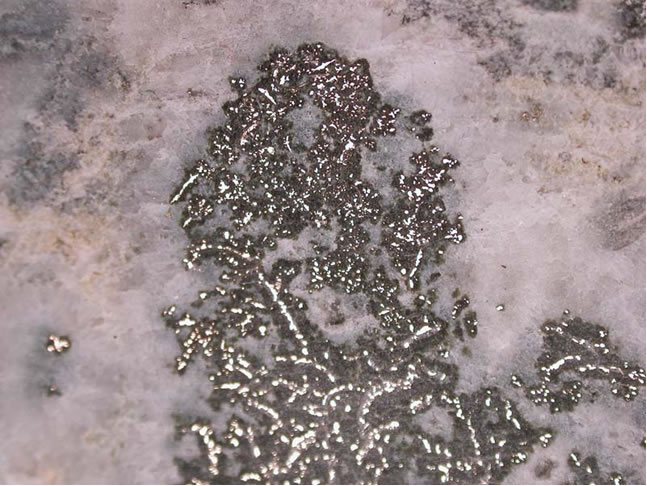
Figure 37) Electrum in roscoelite and quartz, field of view 3.0cm across
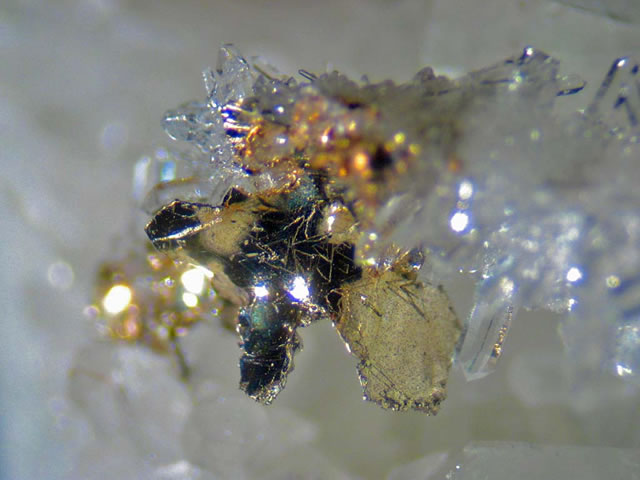
Figure 38) Microphotograph of electrum and quartz, field of view 5mm. T. Balacko collection and Photo
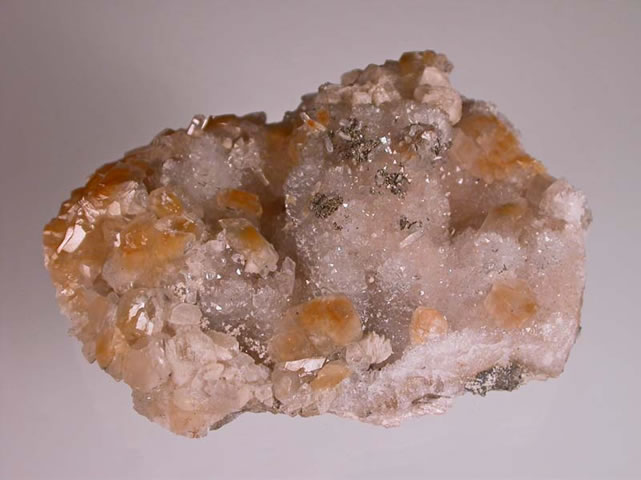
Figure 39) Calcite and pyrite on drusy quartz, Engineer Vein, Level 7, 8.0cm across

Figure 40) Calcite and pyrite on drusy Quartz, Engineer Vein, Level 7, 11.5cm across

Figure 41) Casts of quartz casts of calcite crystals, Captain Alexander’s Dump, field of view 12.0cm across

Figure 42) Quartz casts of quartz pseudomorphs after calcite, Captain Alexander’s Dump, field of view 6.0cm

Figure 43) Quartz epimorphs of calcite crystals, field of view 6.0cm across
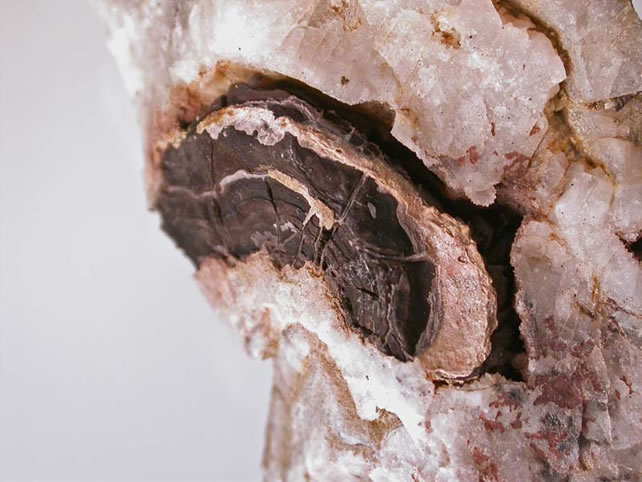
Figure 44) Partially oxidized stibarsen and arsenic in quartz, Captain Alexander’s Dump, field of view 5.0cm across.
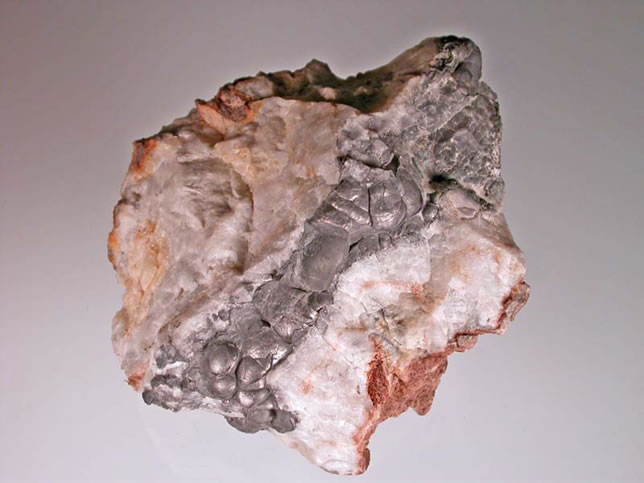
Figure 45) Stibarsen-arsenic in quartz, specimen 14.0cm across. David K. Joyce collection.
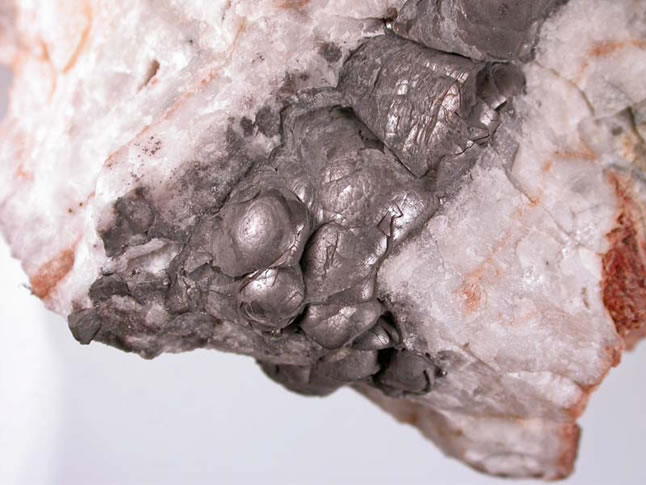
Figure 46) Close-up of Figure 45, field of view 7.0cm across
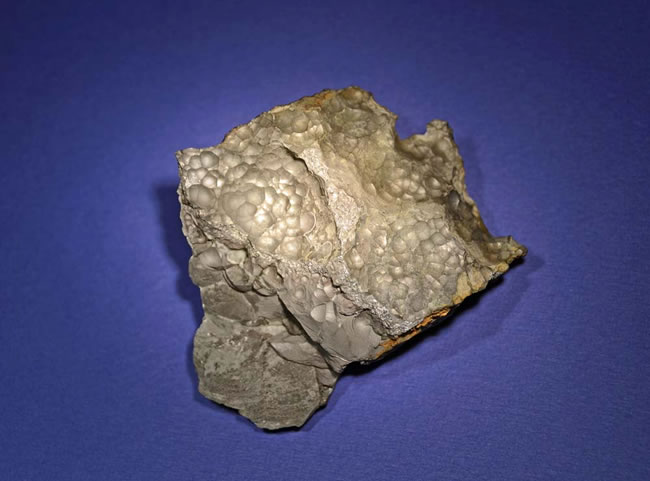
Figure 47) Stibarsen-arsenic, Specimen 8.0cm across, L. Twaites Specimen and photo

Figure 48) Near Carcross, loading the boat with goods for the trip down Tagish Lake to the Engineer Mine.
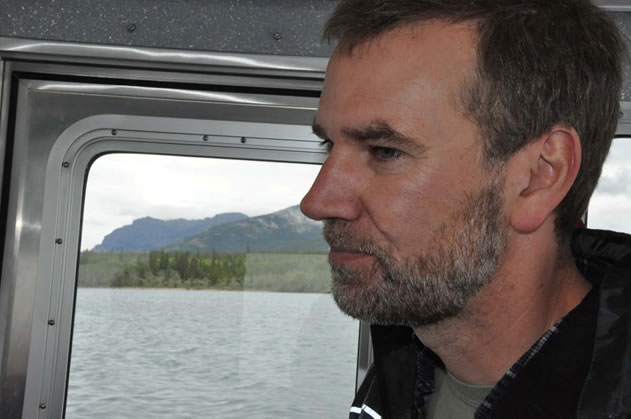
Figure 49) Darren O’Brien, Vice President, Exploration for BCGold Corp. Darren knows the Engineer Mine and area geology extremely well and is pursuing both, a full understanding of the high-grade, narrow-vein potential of the property, as well as the possibility of finding a large tonnage, low grade deposit, as well.
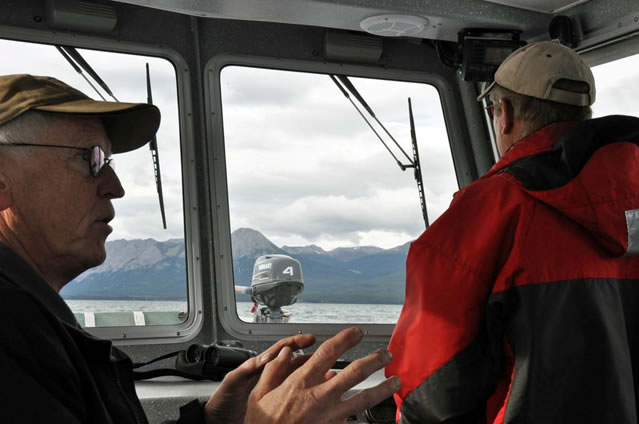
Figure 50) Swede Martensson Makes a point during the trip down Tagish Lake. Swede is a great conversationalist and story-teller and never seems to be at a loss for good words.
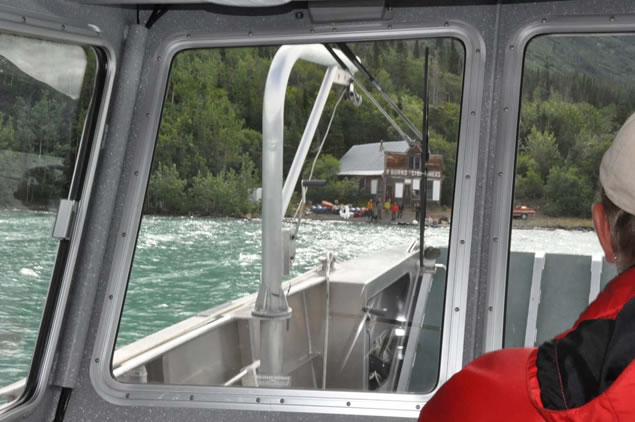
Figure 51) The scene as we arrive at the Engineer Mine. On the beach, you can see the people waiting to welcome the boat, willing to help or ready to leave on the boat after their time at the project.
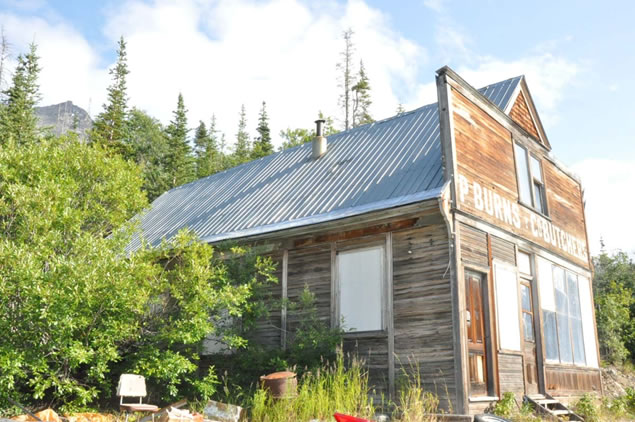
Figure 52) One of the old buildings from the original “mining town” that remains standing and in fairly good shape. “P. Burns & Co, Butchers”. Wonder why it managed to stay upright while other buildings have fallen down or rotted?!

Figure 53) Belinda Gladish, the camp cook and head first aid person. Always ready with a smile and good meals and snacks. Belinda and her husband spend half of the year sailing around the world somewhere (their boat is currently moored in Indonesia) and during the summers, return to the Yukon to work. Belinda usually hires on as a cook at mining or construction camps. No wonder she smiles so much!

Figure 54) The back of Darren O’Brien and he and I paddle our canoe along the shore of Tagish Lake to the old adits that are present on the shoreline.

Figure 55) This is the shoreline adit that was driven on the Engineer vein, which you can see on the left side of the adit. The drift was driven in just 50m, or so, as an exploration drift but no actual stoping was done in this location.
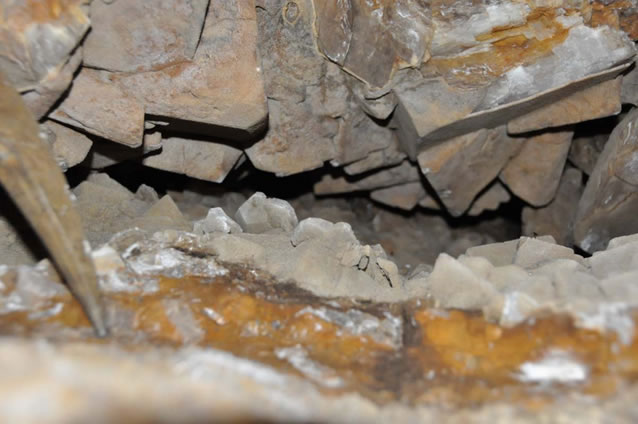
Figure 56) This is a look at the big vug in the shoreline Engineer Vein adit. Note the hammer pick for scale. The calcite crystals with a skin of quartz crystals are up to 100mm or so across.
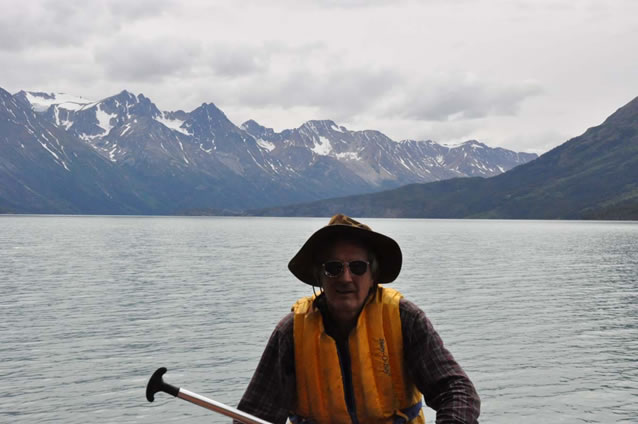
Figure 57) A view of me in the canoe as we left the Engineer Vein. I never got tired of the scenery in the vicinity of the mine! D. O’Brien photo.
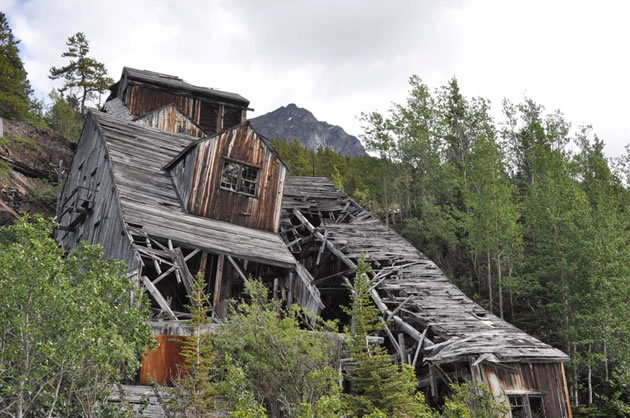
Figure 58) A close-up of the poor old mill buildings that were built in the 1920’s. That is the Engineer Mountain peak behind it.
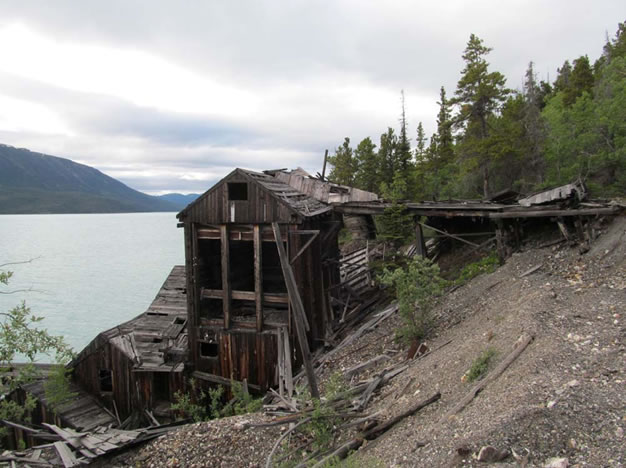
Figure 59) Another view of the old mill buildings at the Engineer Mine, on the shore of Tagish Lake.
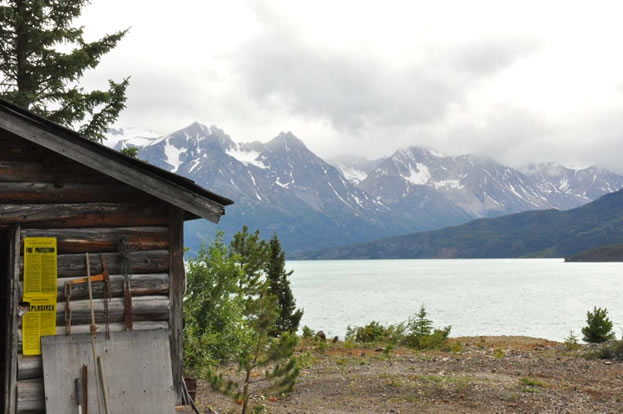
Figure 60) One of the original log cabins now used as storage at the Level 5 portal.
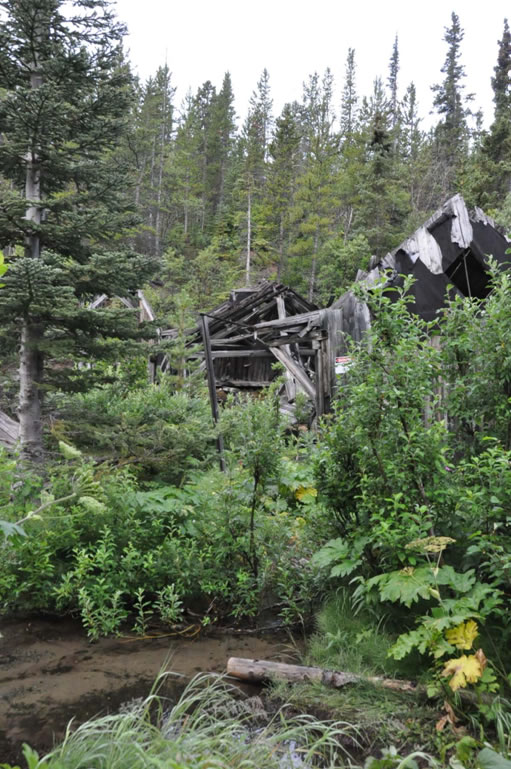
Figure 61) The remains of the mill that Captain Alexander built in 1912. The Level 1 adit is just behind it to the right.
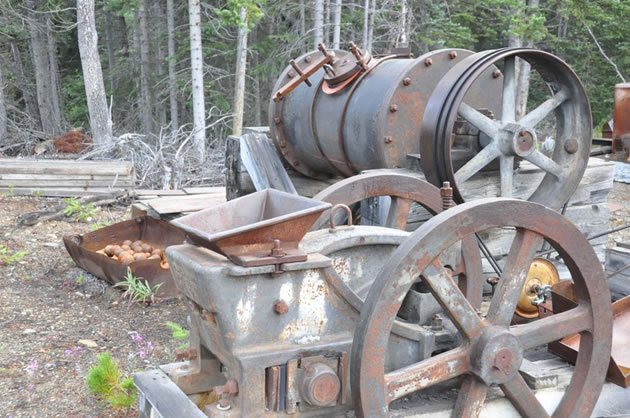
Figure 62) Captain Alexander’s “clean-up mill” and crusher. In those days, Captain would put crushed, hand cobbed, high grade into the mill, grind it up with the help of the iron balls to the left of the mill. When the high grade was ground fine enough, he would put a flask of mercury into the mill and then rotate it for an hour while the mercury amalgamated with the electrum. Afterwards, the amalgam was treated to separate the precious metals from the mercury. Apparently, the allemontite was a real problem for the amalgamation and retort-recovery processes.
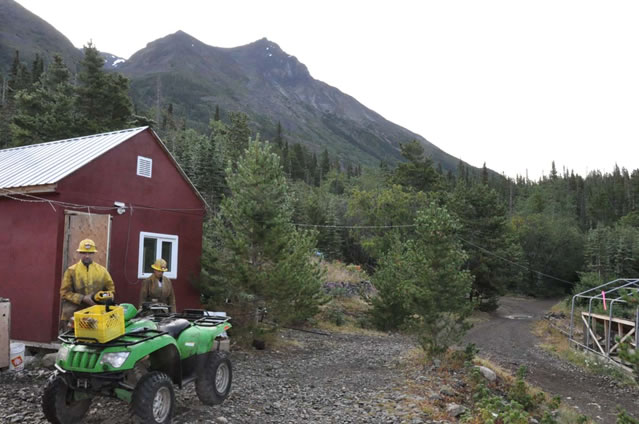
Figure 63) This is the geology office at the Mine. Two of the geology team are preparing to hop on the ATV to go on to their work for the day.
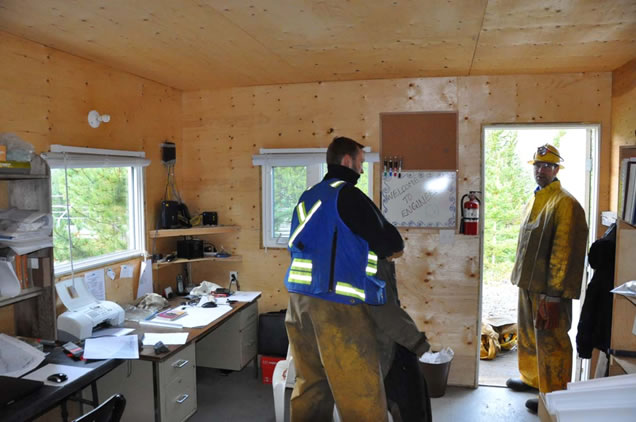
Figure 64) Dr. Leo Millonig and Darren O’Brien readying to head out to “the field”.
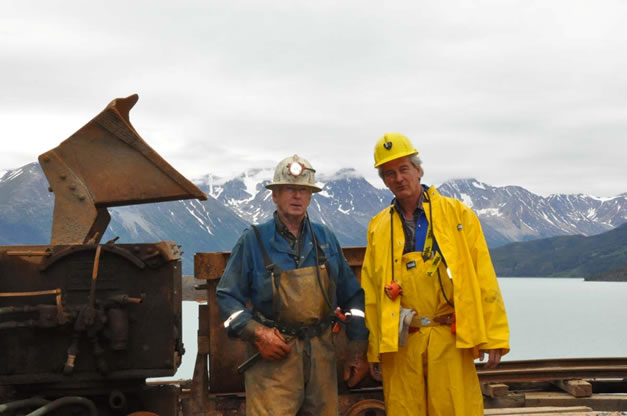
Figure 65) Paul Wray, mine supervisor, lead miner, Yukon/Arizona resident and friend at the portal waiting to go underground during my first day underground at the mine. Note how CLEAN my clothes were BEFORE I went underground? See Figure 59 to see what they looked like the next day!
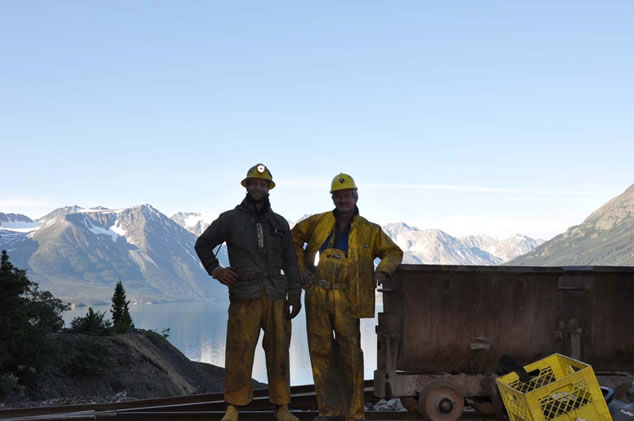
Figure 66) Dr. Millonig and me waiting to go underground on my second day at the mine. The recently dewatered levels had a black mud in them that really stuck to everything, until it dried out a bit!

Figure 67) Darren O’Brien confers with Paul Wray at the Winze head as they wait to go down the ladders to work on Levels 6 and 7. You can see that the timber is new and was installed by Ampex Mining to serve as support for a winch and to secure the area around the top of the shaft.

Figure 68) Paul Wray and Bruce Coates, project manager, at the Level 5 winze station.

Figure 69) Darren O’Brien, in the “manway” ascending the ladders from the working levels below.
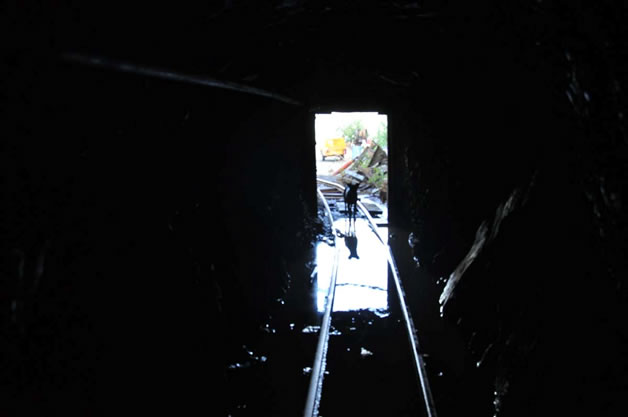
Figure 70) Paz, the camp dog (belonged to geologist April), often tried to follow us underground and had to be chased back out. When not yearning to go underground, Paz had a running battle with the local squirrel population, slept on the deck, chased sticks and, I think, had a thoroughly enjoyable time at the Engineer Mine.

Figure 71) The vug just beyond the winze station on Level 5, in the Engineer Vein. Here we are looking up about 7-8 feet above the end of the re-bar ladder. See figures 15, 26 and 28 for the type of calcite found in this cavity.
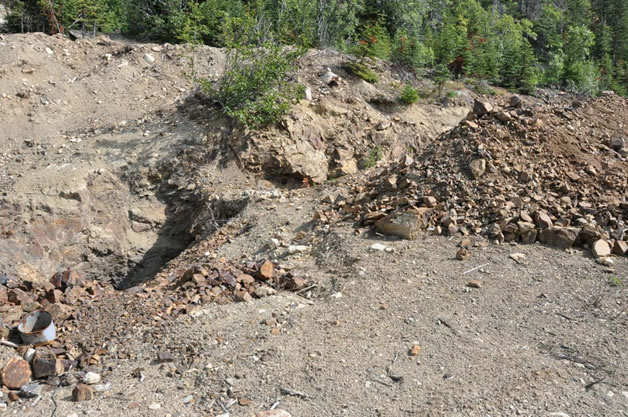
Figure 72) Shaft Vein shaft to the left, a vein trench and pile of material from the vein trench. We found some fairly high grade electrum on this pile.
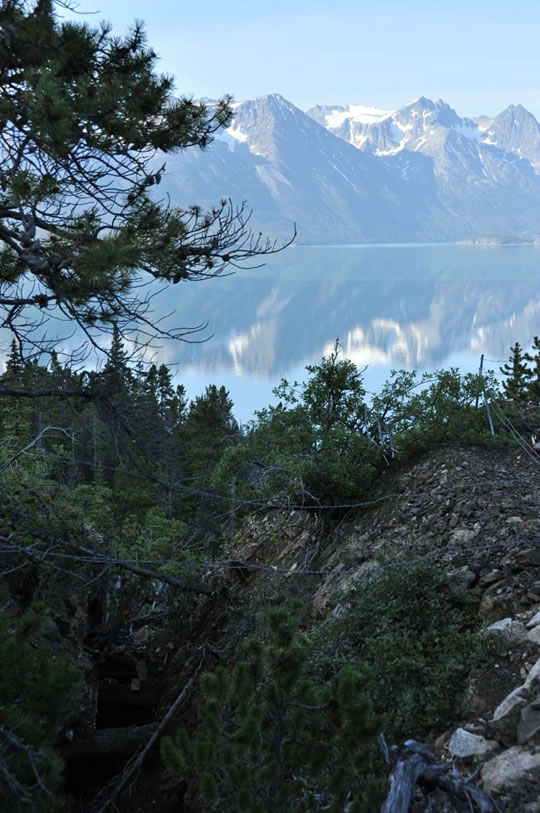
Figure 73) In this photo, near the bottom-left of the photo, you can see an old stope that broke through to surface. The Juneau Ice Field, I believe, the second largest ice field on the North American continent, is in this mountain range not far behind the mountains that you are looking at.
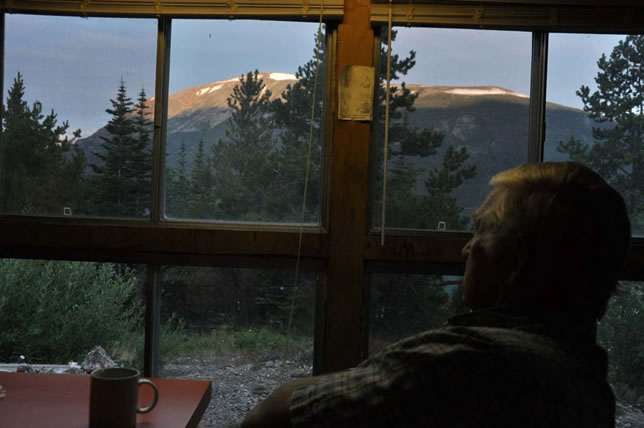
Figure 74) Paul Wray contemplates the sunrise scenery out of the dining hall window as he has his morning coffee. If you are ever in Yukon, Paul owns the Yukon Rockshop, located just outside of Whitehorse, which is open during much of the non-winter year. Lots of interesting minerals and ores, especially from the Yukon.

Figure 75) Dr. Leo Millonig tries his hand on the metal detector. He found a nice chunk of allemontite! We’re very interested to learn what Dr. Millonig learns from his studies of the geology and mineralogy of the Engineer Mine area.

Figure 76) Mike, Leo, Swede, Darren and Bruce wish us a farewell, as we depart the Engineer mine on our way back to Carcross. The day before, since the sampling project was completed, the pump was decommissioned and pipes removed from the shaft for the season and the underground workings started to fill with water again.
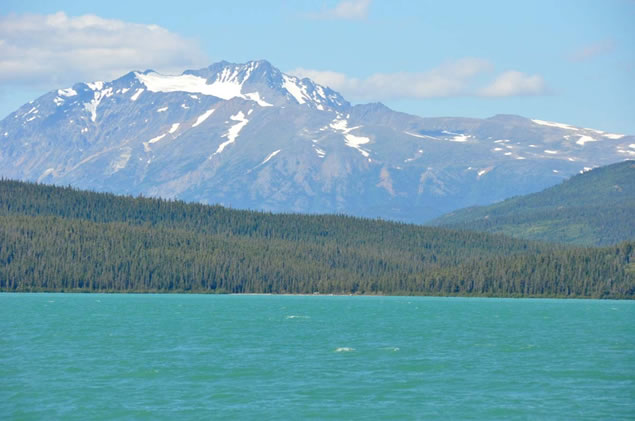
Figure 77) A gorgeous sunny day for our trip to Carcross.
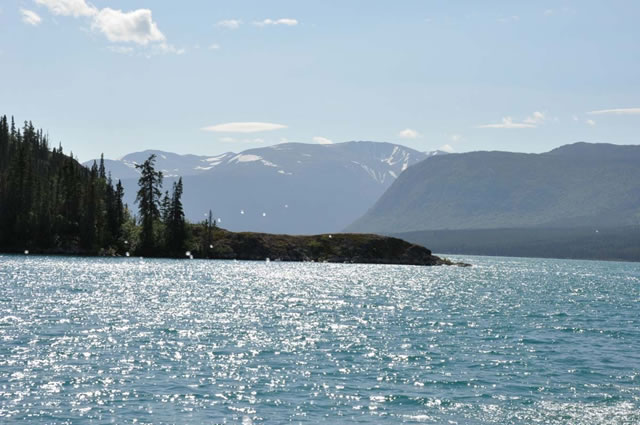
Figure 78) As Paul Wray said on the trip out, “People pay good money for a boat ride like this!”

Figure 79) The blue colour of glacier-fed lakes, always amazes me!
To view mineral Engineer Mine specimens for sale, you can click here.